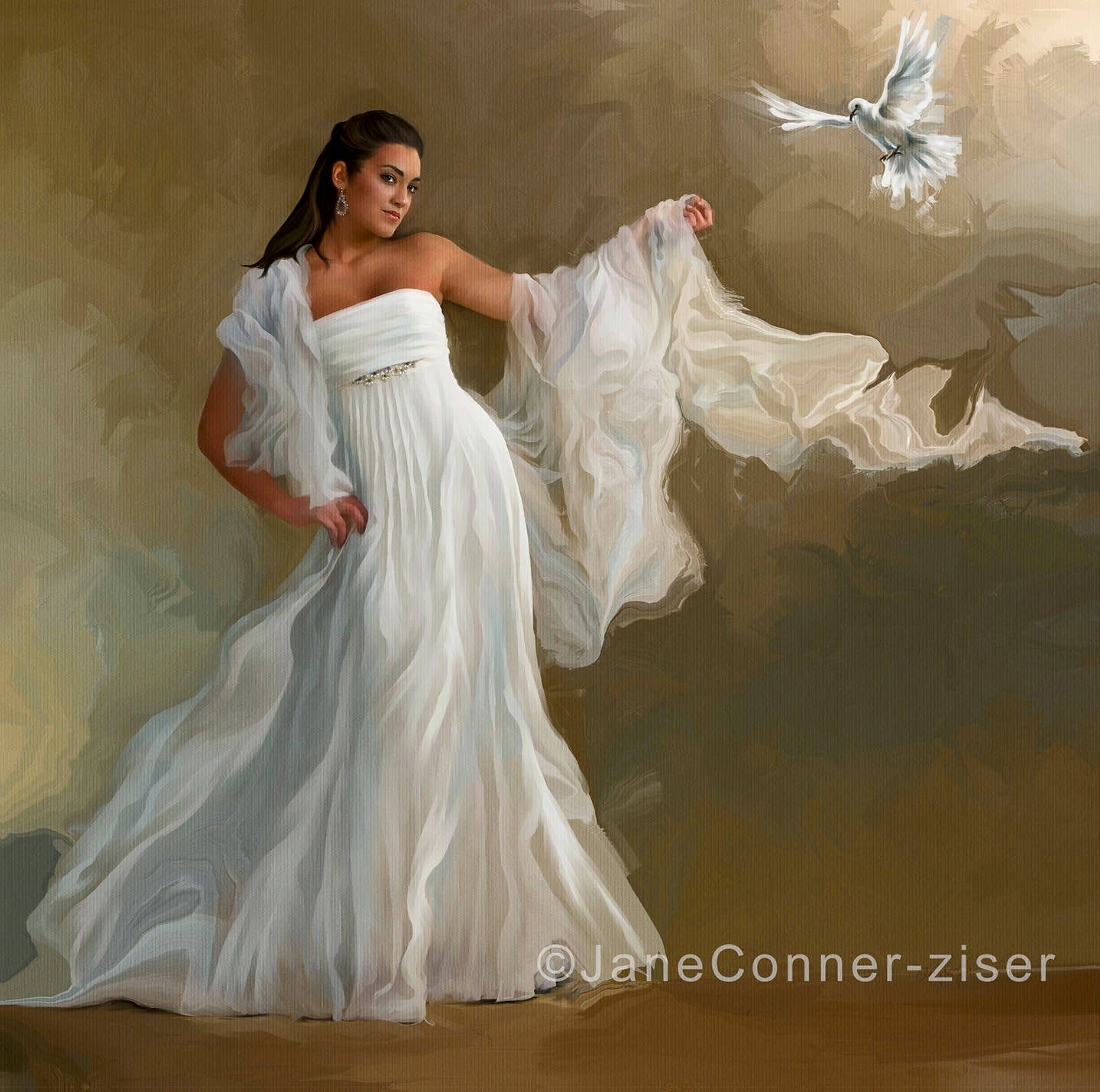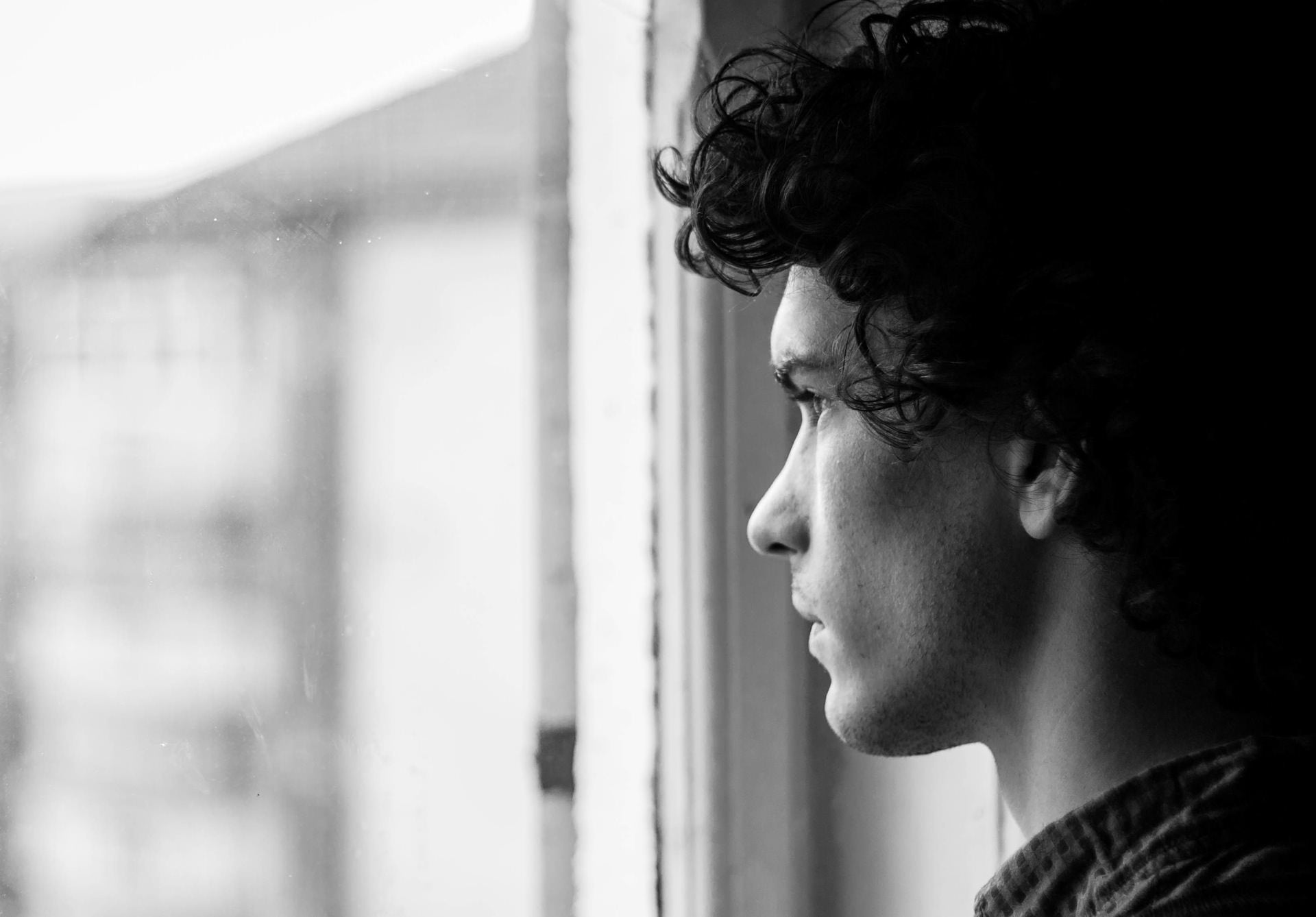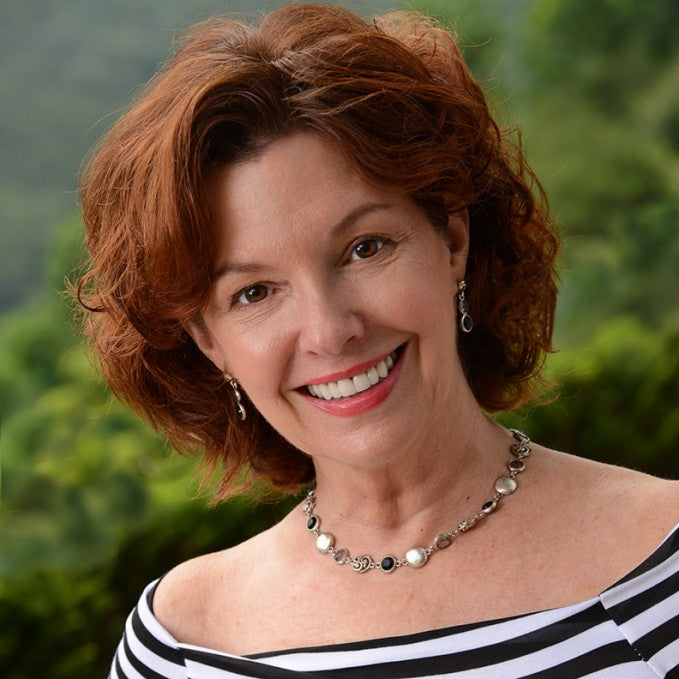Learn about different output media types to offer a variety of media as a way to expand your portrait photography business.
Portrait photography can be printed on so many different types of media, depending on what the client needs the image for.
Understanding the different output styles will help you choose the right creative direction for your portrait photography.
It will also help you offer your clients a variety of media, which will expand your business as well as your customer base.
In this article I will share with you 7 different ways you can offer portrait photography.

But, Before We Start…
Offering different types of output media is great, but you should come up with a carefully thought-out product and price menu that is attractive to potential buyers and profitable for your business.
The foundation of the product and price list is making a list of categories in which images can be created in similar blocks of time with similar material costs so they can be delivered profitably.
Each category must be visibly distinctive so the client can easily appreciate why one product is more expensive than the other and understands the different values offered within each level of imagery.
Also, make a list of what your clients will do with the images they purchase from you.
Most people choose between wall portraits on canvas, wall portraits and/or collages on photo paper, folio collections, and small prints to keep or give away as gifts.

Image by Travis Isaacs
In addition, portrait photography is popular for sharing on social media and sending out as holiday greetings.
From there, however, technology offers the opportunity to turn the photographs into paintings in a variety of styles; sketches, pastels, watercolor, impressionistic, classic oil or acrylic, airbrush, photo realistic, abstract – or a combination of traditional and computer generated media.
My suggestion here is to choose one or two options that lend themselves to repetitive technique and are distinctively different in visual appearance in order to streamline the product menu and refrain from offering so many options that the potential client becomes indecisive.
Know the different ways your customers will present their portrait photography before selling the different types of output media.
Now let’s get started!
1. Traditional Oil Painted Portrait on Canvas (From Life)

This is the top of the line portrait for those clients who want the very best.
It takes many years of training to become a Master Portrait Painter and several painting sessions to create a beautiful hand painted oil.
A one of a kind image, the price reflects heirloom quality, hand craftsmanship, and the lifetime of study and practice required to create beautiful live studies of people. It is available in all sizes as per quote per individual painting.
The challenge of this is that it has to be quoted per job and if additional copies are desired, they will not have the same detail, color, and feeling of the original piece. But the benefit is that it’s one of a kind and is a prestige product.
This is the most expensive product among the 7 media types, so all other products will be considered and valued in comparison to it. In addition, it balances the price list to ensure the most profitable items are in the middle.
It “justifies” the price of the digitally created paintings which are less expensive paintings but don’t look like it if they are the top of the price list.
And if you don’t paint, collaborate!
You and the painter create the photograph, the painter paints the product, and both of you make an agreed upon split of profits.

You should know that the traditional painter’s pricing structure is different from photographers.
Photographers base their prices on talent, material cost and time. Painters include how many things require painting: the number of people, whether it is head and shoulders, three quarters view or full length, and what the background is.
Choose an artist whose work complements yours and sit down with them to create a price list that works for both of you, including whether or not you do the photography because many portrait painters like to do their own, or would want to be present when you do because the image they compose is part of their style.
When this line is sold the artist receives the bulk of the money because they do the bulk of the work. You receive a referral fee, usually a percentage.
2. Classic Oil Style Painted Portrait on Canvas (From Photography)

A mixed media product, this portrait makes advantage of a photograph for the under painting and Corel Painter (or Adobe Photoshop) to paint the portrait.
The digital painting is output onto canvas, stretched, and then usually finished with embellishment or texture.
It is every bit as authentic a painting as the Traditional Oil but can be created in less time and may be sold for a lesser price. It is available in wall sizes, usually 20×16 and up.
The challenge of this is that it’s an expensive piece that sometimes has to be justified because it is created digitally. Having the classic painting above shows people that they are actually getting a beautiful painting at a beautiful price.
But the benefit is that once the original has been created, multiple “originals” may be printed as gifts for relatives, used to create holiday cards, etc.
This is a top of the line product for clients that want multiple originals of a beautiful hand painted portrait.
Or, for clients who want an original oil painting but do not have the budget for one.
It is more time consuming to paint than the Impressionistic product just below, so it is a more expensive category.
3. Impressionistic Painted Portrait on Fine Art Paper (From Photography)

It is visibly different from the Classic Oil Style Portrait in two ways: the painting fades away on the edges cutting down on the amount of time it takes to create the piece, and it is output onto heavy weight fine art paper.
It looks different, it feels different, and it costs less than the level above. It is also created using photography and software but does not require canvas stretching nor topical embellishments.
It is usually available in sizes up to around 20×24 or 24×36 because it doesn’t have a lot of detail to carry it into larger sizes.
The challenge is that you’re not going to sell a 6-foot painting, but other than that there are none that I can think of!
The benefit is that it allows clients who don’t have a large budget to enjoy a beautiful hand painted portrait of themselves or their loved one.
And, each additional output is a top quality “original”. After the initial sale has been made, suggest smaller sizes for gifting to relatives, making holiday cards, etc.
This painting style is pretty, fast, and profitable to create.
It’s the one most often purchased because it is lovely and less expensive than the Classic Oil Style above.
If you want to learn how to turn your photos into this style using Adobe Photoshop and Corel Painter, check out the post here.
4. Fine Art Black and White Portrait Photography

Created with photography plus professional portrait retouching and enhancements (Photoshop).
The portrait is output onto heavy weight fine art paper, usually with a white border as would many fine art images be presented.
It is usually available in sizes up to around 20×24 or 24×36 to fit the genre for fine art black and white but it can be printed larger, by special quote, if the image is suitable.
The challenge is that, once again, it’s not a huge size product, but a beautiful one.
But the benefit is that it has all of the reproducing benefits of photography and is fast and easy to create.
Printing onto heavyweight art paper and charging more than color photography creates the perceived value of this easy to produce product that is appealing to a large audience.
Make sure the paper is archival and advertise it in the product description.
5. Color Portrait Photography on Canvas

This product is top of the line for many portrait photography studios.
Photography on canvas is beautiful and when combined with professional retouching and enhancements (Photoshop), plus some surface embellishments it is striking, particularly in larger sizes.
It is usually offered in wall sizes 20×16 and higher.
The challenge is that the canvas alone doesn’t generally entice clients to buy up from standard color photography. Embellishments are important.
But the benefit is that it has all of the reproducing benefits of photography and showcases well in clients’ homes.
This is the top of the line photography product.
Although it is priced lower than the Fine Art Black and White, it takes longer to produce.
This makes it more attractive to buy because another photo product is priced higher and this dynamic encourages large canvas print sales.
6. Color Portrait Photography on Artist Photo Paper

The portrait all photographers love to sell is fully retouched and enhanced (Photoshop) and available in all sizes.
Wall sizes are usually mounted onto archival art board for stability.
There are no challenges here but you should add opportunities for perceived value by printing on a heavy paper with good smooth luster photo surface, add a hand signature and artist guarantee.
The benefit is that it’s the perfect product for clients who want a variety of products, suggest a large wall portrait for themselves, a few smaller wall portraits for extended family and clusters of smaller images for wall collages, offices and folios.
This is the mainstay of portrait photography studios; it’s why most clients choose a professional photographer to create their portraits.
All other products are based upon this level of fine professional photography.
7. Gift Portraits

This category is designed for small orders, PR shots, bulk printing for holiday cards and other jobs that do not fit into the categories above.
Fully retouched and enhanced (Photoshop), the portraits are printed on standard photo paper.
In order to use this category effectively, offer the images in sizes just up to 11×14.
The challenge is that it’s the least expensive product on the price list so it doesn’t offer as large a profit per order.
But the benefit is that the word “gift” on the price list indicates that portrait photography should be shared with family and friends and plants the seed for add-on sales even before the photography session.
This type of media lends flexibility for selling.
It makes add-on sales attractive and is an option for folio and collage orders for clients who want more but are running out of budget. This category can bring price conscious clients in the door who may buy up after seeing the work.
Once the products have been categorized and defined, follow through by selecting the output media, the surface finishing and how you will present the portraits for pick up.
Some studios deliver in frames; others deliver in gift boxes or slipped into clear art sleeves backed with art board.
Choose a presentation that enhances your artist image and is suitable for each category of portrait, keeping in mind that everything doesn’t have to be the same.
Some Additional Tips
Choose Sizes Wisely

When you are defining the products, offer them in sizes that are appropriate to the medium.
For instance, a stretched canvas portrait looks great in large sizes but might look awkward on a wallet-sized image.
A detailed oil painting gets more and more stunning as the size gets bigger. A soft impressionistic painting begins to lose appeal in large sizes from lack of detail – unless it is to be viewed from great distance.
Test Media With Sample Packs

Get a sample pack of output media to get started on your selections.
Choose the ones that have eye appeal and also feel good to touch. HINT: for photo output, white paper delivers what you see on your monitor.
Cream and other tinted papers affect the color of the image; you might like it – or not.
Classic surfaces generally have more timeless appeal in portraiture, but use metal and other trendy surfaces here and there for special projects and to keep your product line interesting.
Everyone Wants Images For Social Media

I do not suggest digital proofing for that reason; schedule a portrait viewing, project the previews on a large screen and sit down for a good showing and selling session.
AFTER the order has been placed and paid for in full, many portraitists offer web versions of the finished images as a special thank you gift for the client.
The reason that only the ones ordered and finished are provided is that most portraitists do retouching, enhancements and special finishing and do not want their raw captures online as representations of their finished work.
Offer Price Breaks

Most portrait photography studios offer price breaks for additional images of the same pose when ordered at the same time.
For instance, a 20×16 might be priced at 1200.00 but if the client wants three of them, the additional ones might come in at 30% off, or 840.00 each.
Base the savings upon percentage and do what feels good to you. Some studios use this savings as an incentive to buy additional images and also to encourage more sales from fewer poses.
Other studios encourage lots of poses and price the work to be profitable for the additional production time it takes to finish them.
Use Buying Incentives

A buying incentive is something that makes us want to spend more money because we are getting more value for the money we spend.
A buying incentive might be as described above, “You are getting a 20×16 at full price. If you would like another for your parents, I can give you 30% off the second portrait if you’d like to place the order now.”
Offer Gift Items

Another way to encourage a sale is by offering a gift item that is attached to a particular product.
The gift item should be inexpensive and easy to provide but very special for the client. One idea might be to include four Fine Art Greeting Cards with the Impressionistic wall portrait, miniatures of the purchased painting.
Holidays give the opportunity to tack holiday card sales on to family portraiture.
There are a lot of options for creating buying incentives that will delight your clients and bring in more sales for you, so put your thinking cap on and create something uniquely yours.

Jane Conner-ziser is an award winning photographer, digital artist, premier educator and independent consultant. With over 25 years of experience, 19 of them in digital imaging and evolving technologies, the techniques Jane developed for facial retouching and enhancement and portrait painting from photographs are widely emulated by photographers and digital artists worldwide through her classes, online training and educational products.


